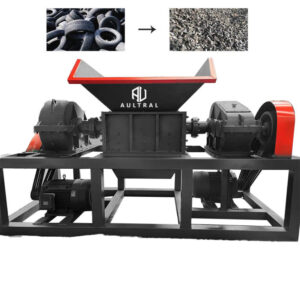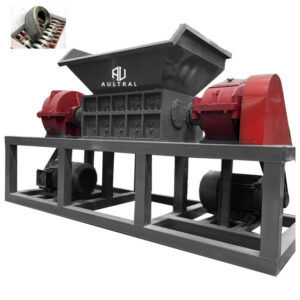Shredder Maintenance and Care: A Complete Guide for Long-Term Performance
A metal shredder machine (also called an industrial shredder) is one of the most important pieces of equipment in the recycling industry. Whether you use a double-shaft shredder, single-shaft shredder, four-shaft shredder, or heavy-duty scrap shredder, proper maintenance ensures smooth operation, consistent output size, and long service life.
This article provides practical tips on daily care, preventive maintenance, and troubleshooting to help you keep your shredder in peak condition.

1. Why Shredder Maintenance Is Important
Maintaining your shredder properly brings multiple benefits:
-
Longer machine lifespan – reduces wear on blades, shafts, and bearings.
-
Consistent shredding efficiency – prevents blockages and uneven particle size.
-
Lower operating costs – minimizes downtime and expensive repairs.
-
Improved safety – reduces risk of fire, overheating, and accidents.
2. Daily Maintenance Checklist for Shredders
Operators should perform these checks before and after each shift:
-
Blade condition – inspect cutting knives for cracks, chips, or dull edges.
-
Lubrication – apply grease to bearings and moving parts regularly.
-
Check for foreign objects – remove stones, metals, or non-processable materials.
-
Motor and gearbox – listen for unusual noises or overheating.
-
Safety system – test emergency stop buttons and protective covers.
3. Weekly and Monthly Shredder Maintenance
In addition to daily care, schedule these tasks:
-
Tighten bolts and fasteners – prevent vibration-related loosening.
-
Inspect belts and chains – replace worn transmission parts.
-
Hydraulic system (if equipped) – check hoses, seals, and fluid levels.
-
Electrical inspection – ensure wiring, sensors, and switches are functioning.
-
Cooling system – clean air filters and ensure proper ventilation.
4. Annual Preventive Maintenance
At least once a year, perform a full inspection:
-
Replace worn blades or re-sharpen knives – ensures efficient shredding.
-
Oil and grease system flush – maintain proper lubrication.
-
Check gearbox oil – replace oil to protect gears.
-
Frame and chamber inspection – look for cracks or deformations.
-
Professional servicing – hire technicians for calibration and overhaul.
5. Best Practices for Shredder Care

-
Never overload the shredder – follow the rated capacity for material type and size.
-
Use genuine spare parts – ensures better compatibility and durability.
-
Train operators – proper use reduces misuse and damage.
-
Keep shredder clean – remove dust, scrap, and debris from the cutting chamber.
-
Record maintenance logs – track repairs and servicing schedules.
6. Common Shredder Problems and Solutions
-
Low shredding efficiency → Sharpen or replace worn blades.
-
Machine overheating → Check bearings, lubrication, and motor cooling.
-
Excessive noise → Tighten loose parts and check gearbox alignment.
-
Frequent blockages → Avoid feeding oversized or unsuitable materials.
Conclusion
A well-maintained industrial shredder machine not only improves productivity but also reduces operational risks and long-term costs. By following a structured daily, monthly, and annual maintenance plan, you can keep your metal shredder, double-shaft shredder, or recycling shredder running efficiently for years.
Preventive care is the key to maximizing your shredder’s value and ensuring stable output in your recycling or waste processing operation.
